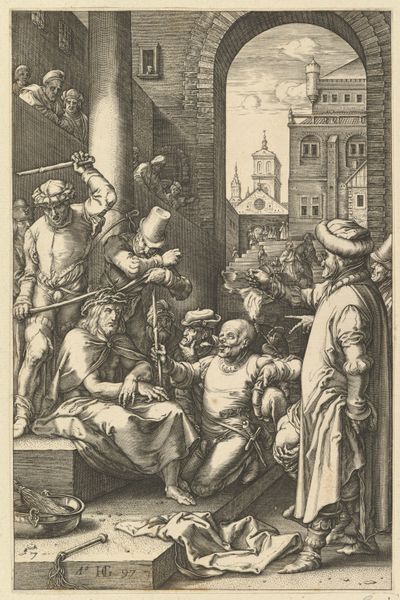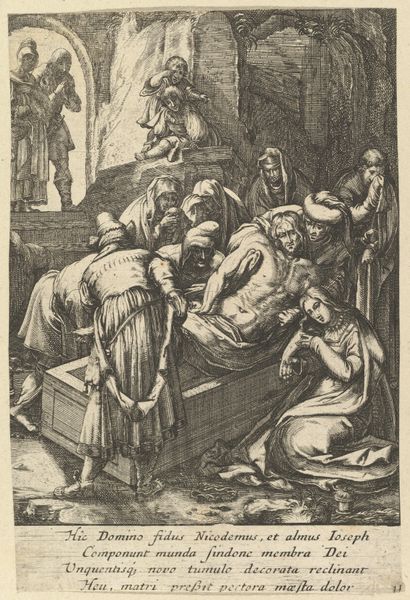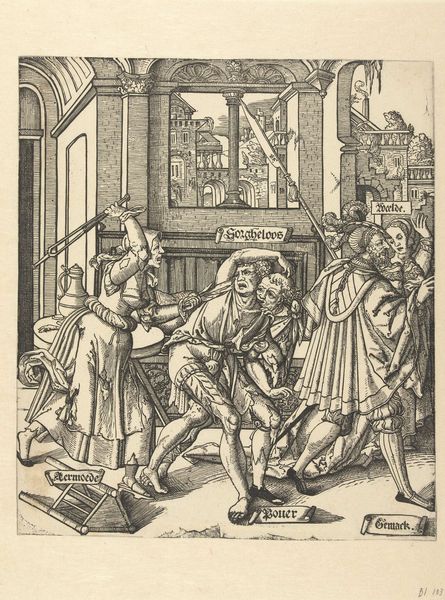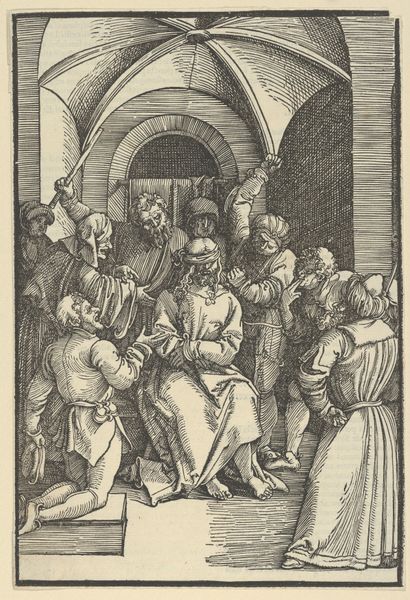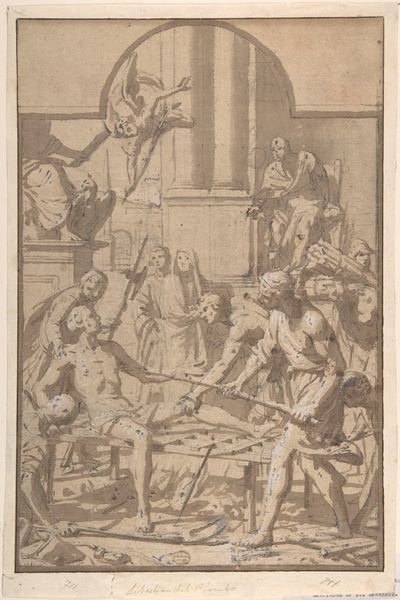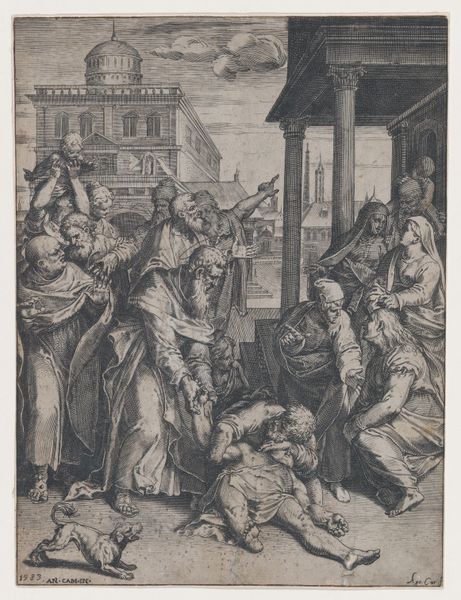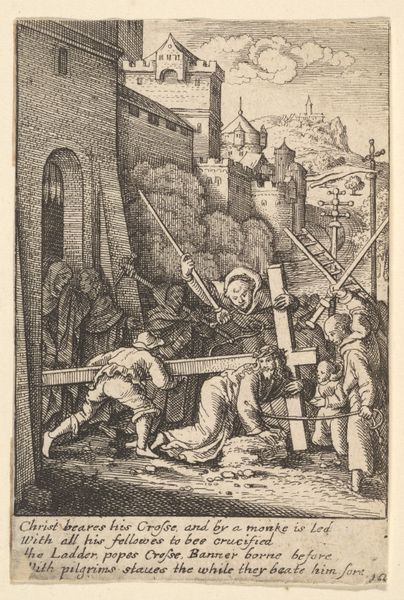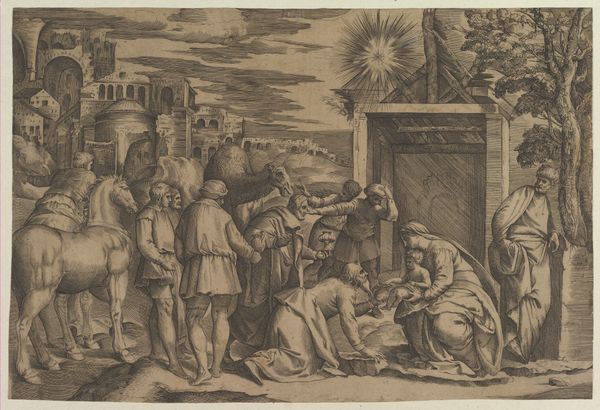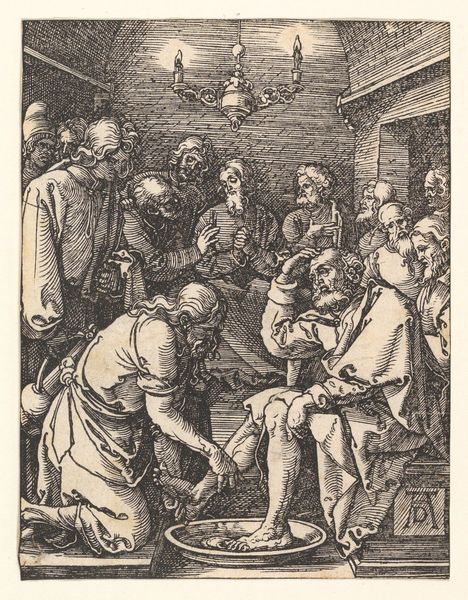
The Crowning with Thorns, from "The Passion of Christ" 1610 - 1700
0:00
0:00
drawing, print, engraving
#
drawing
#
baroque
# print
#
figuration
#
history-painting
#
engraving
#
christ
Dimensions: Sheet: 5 7/16 x 3 15/16 in. (13.8 x 10 cm)
Copyright: Public Domain
Curator: "The Crowning with Thorns," a print by Nicolas Cochin from sometime between 1610 and 1700. It’s… incredibly detailed. There’s almost too much to take in. What do you see here? Editor: I'm struck by the stark contrast between the supposed holiness of the subject and the rather vulgar presentation. Cochin really emphasizes the violence. Given your interest in materiality and context, what aspects of this print speak to you the most? Curator: The process of creating the print itself becomes very relevant here. Consider the material circumstances: copper plates, the tools for engraving, the access to a printing press. Who commissioned this? Where was it circulated? Was it meant for private devotion or for wider distribution? This connects us directly to the economics of religious art in the period. Editor: So, it’s less about the spiritual message, and more about how that message was produced and disseminated as a commodity? Curator: Exactly! Think about the labour involved – the engraver’s skill, the paper maker's efforts. This was skilled work, and therefore had value. This print wasn't just about faith; it was about production, consumption, and social structures. We have to look past the iconography to examine the processes behind the image itself. Where did the funding come from, how much labor was invested in creating it, and whom was it produced for. It challenges conventional ideas of high art as the result of individual creative genius, focusing on materiality, collaborative production, and class relationships, thereby democratizing our understanding of the artwork's real significance. Editor: I never considered the printmaking process itself as a lens for understanding the social implications of the work. It adds another layer of meaning! Curator: Precisely. And this layered meaning lets us examine what it represents within a Materialist mindset, focusing less on subjective artistic visions. Editor: I'll definitely think about the material production of art differently from now on!
Comments
No comments
Be the first to comment and join the conversation on the ultimate creative platform.



